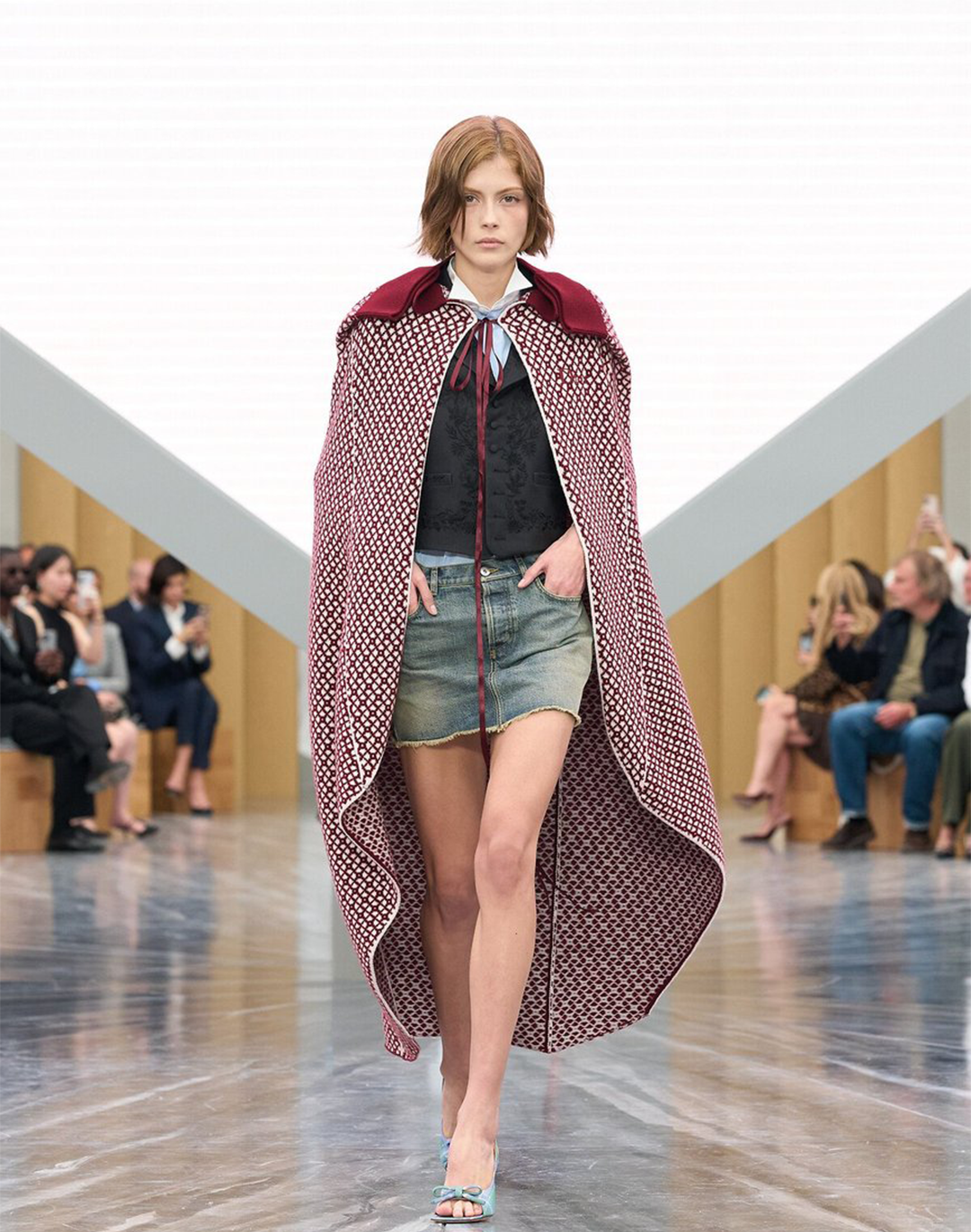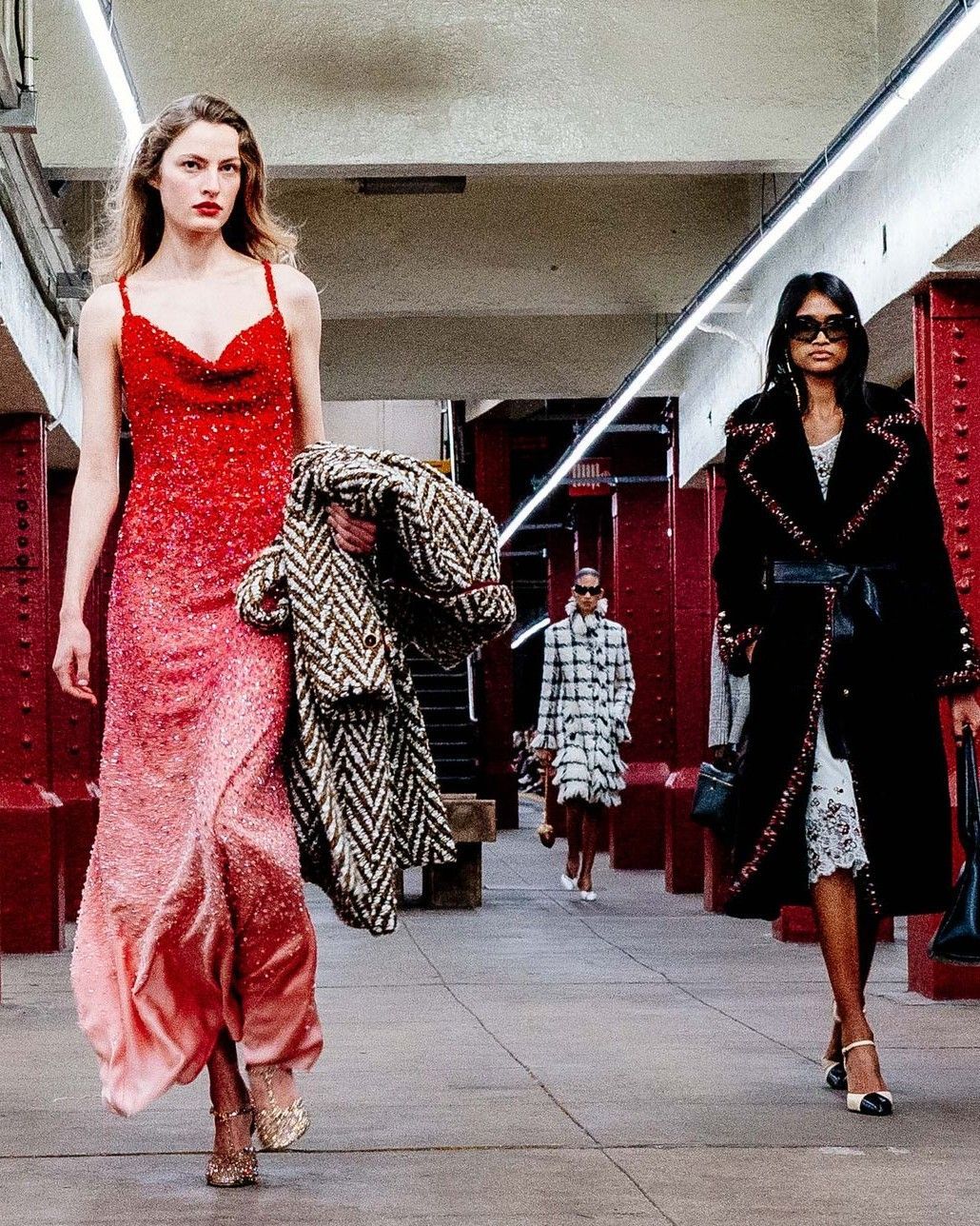
K-pop idols remain the undisputed winners of fashion month But can brands figure out how to actually win in the market?
Fashion month has finally ended, and although the SS25 was rated slightly disappointing from a creative standpoint, this season has reached record numbers on social media. The reason? The presence of Korean idols in the front row. K-pop artists have become the undisputed stars of recent seasons, not only overshadowing the brands themselves by focusing all attention on their attendance but also guaranteeing fashion shows unprecedented media impact. According to data from Lefty and Karla Otto, this season's earned media value (EMV) reached $839.6 million, with a 59% increase compared to FW24 and a 16% increase compared to SS24. Most of the top 20 influencers identified in the report came from Asia, with 45% represented by South Korean talents who recorded an average engagement rate of 8.8% this year — the highest of all. Fan mania, eclipsing that of the Beatles and One Direction, makes idols' presence felt miles away during fashion week. At Milan Fashion Week, for the appearance of the oldest member of the BTS as the global ambassador of Gucci, the "army" (fandom name) camped outside the garden of the Triennale with banners and posters — despite the rain. Likewise, the crowd for Rosé from Blackpink's arrival at the Saint Laurent show in Paris was so large that she had difficulty entering the venue. The mania is such that fans even established ultra-customized hashtags weeks in advance: for Jisoo from Blackpink's arrival at Dior's show, "LADY JISOO AT DIOR PFW" was trending all day on X. But last fashion month, the South Korean dominance was challenged by the rise of Thai artists — suggesting the emergence of a new potential market for fashion in Asia.
The numbers confirm this rise: last year, for SS24, Jisoo from Blackpink generated an EMV of $11.5 million for Dior, while this year her presence at Tommy Hilfiger and Dior pushed that value to nearly $17 million, placing her second among the top influencers of the last fashion month. Dior, for the third consecutive year, won the gold for overall EMV during fashion month. But while Jisoo dominated in previous years, this time she was surpassed by Thai actor Nattawin Wattanagitiphat, who brought home an EMV of over $14 million with an engagement rate exceeding 23%. This allowed Dior to distance itself by nearly $10 million from the runner-up, Tommy Hilfiger. Lisa from Blackpink debuted as the lead ambassador for Louis Vuitton (after the end of her previous contract with Celine), taking the title from Zendaya, who had held the position for over two years, placing LV eighth in the rankings. Thai actress Rebecca Patricia Armstrong made her debut at Paris Fashion Week and became the influencer with the highest EMV at Chanel's show, taking the title from Jennie from Blackpink, nicknamed by fans as “human Chanel”.
@product_fails He was very polite and had a beaming smile #DiorSS25xApo #DiorSS25 #ApoNattawin #pfwss25 #DiorSS25 #ParisFashionWeek #Dior #fashionweek #tiktokfashion La belle vie - Sacha Distel
On this side of the world, Kylie Jenner remains the celebrity with the highest EMV of the entire SS25, thanks to her participation in the shows of Atleine and Schiaparelli and her unexpected closing of the Coperni show at Disneyland Paris. Also, Jin from BTS, with his return to the scene after military service, helped bring Gucci back into the top 10, from which the brand had dropped during FW24. However, alongside triumphant returns, there were also notable absences. Most of the Stray Kids members were unable to attend fashion month due to scheduling conflicts. Loewe, without its brand ambassador Seungmin, failed to enter the top 10, despite the great anticipation surrounding its show and speculations about J.W. Anderson's departure from the brand. In contrast, the youngest member of Stray Kids, I.N., made his mark with his debut as a brand ambassador for Bottega Veneta, bringing the brand back into the top 10 after a few seasons out of the rankings. Similarly, the group Enhyphen, ambassadors for Prada, helped push Miuccia Prada and Raf Simons' brand to third place.
I.N HAS ARRIVED
— daily innie (@dailyinnieluv) September 21, 2024
I.N AT BOTTEGA VENETA MFW#I_NxBOTTEGAVENETA#I_NatMFW24#BottegaVenetaSS25pic.twitter.com/G7oy8D1SQE
For years, brands have been tirelessly trying to form these alliances with K-pop powerhouses to bring to the shows the virality they might otherwise miss. However, beyond the social media buzz about the idols and their appearances at the shows, do these 15 minutes of fame benefit fashion houses? Many have noticed how attention is already progressively being taken away from the collection and directed toward a celebrity. This virality, in any case, is entirely fueled by the fans of these celebrities — a group of potential consumers whose average age is irrelevant to brands that sell bags for more than €3,000. At the same time, if there's an idol, there's a line outside the show, if there's a line outside the show, there's trending on social media, and if there's trending on social media, the brand is talked about, especially in the Korean market, which has become increasingly desirable for luxury brands after the sales crisis in China. Just a few years after their boom, we are already seeing the first idols changing or renewing their contracts as brand ambassadors, indicating that their importance to brands remains fundamental. The main problem, however, revolves around the enormous amount of numbers, percentages, and data surrounding a brand. If the EMV was once considered a suitable metric for analyzing a brand's growth, it is now fueled by falsehoods to reassure the various boards of directors behind major groups. Regarding fashion shows, those numbers do not necessarily represent the brand's actual sales: quantity does not equal quality.














































